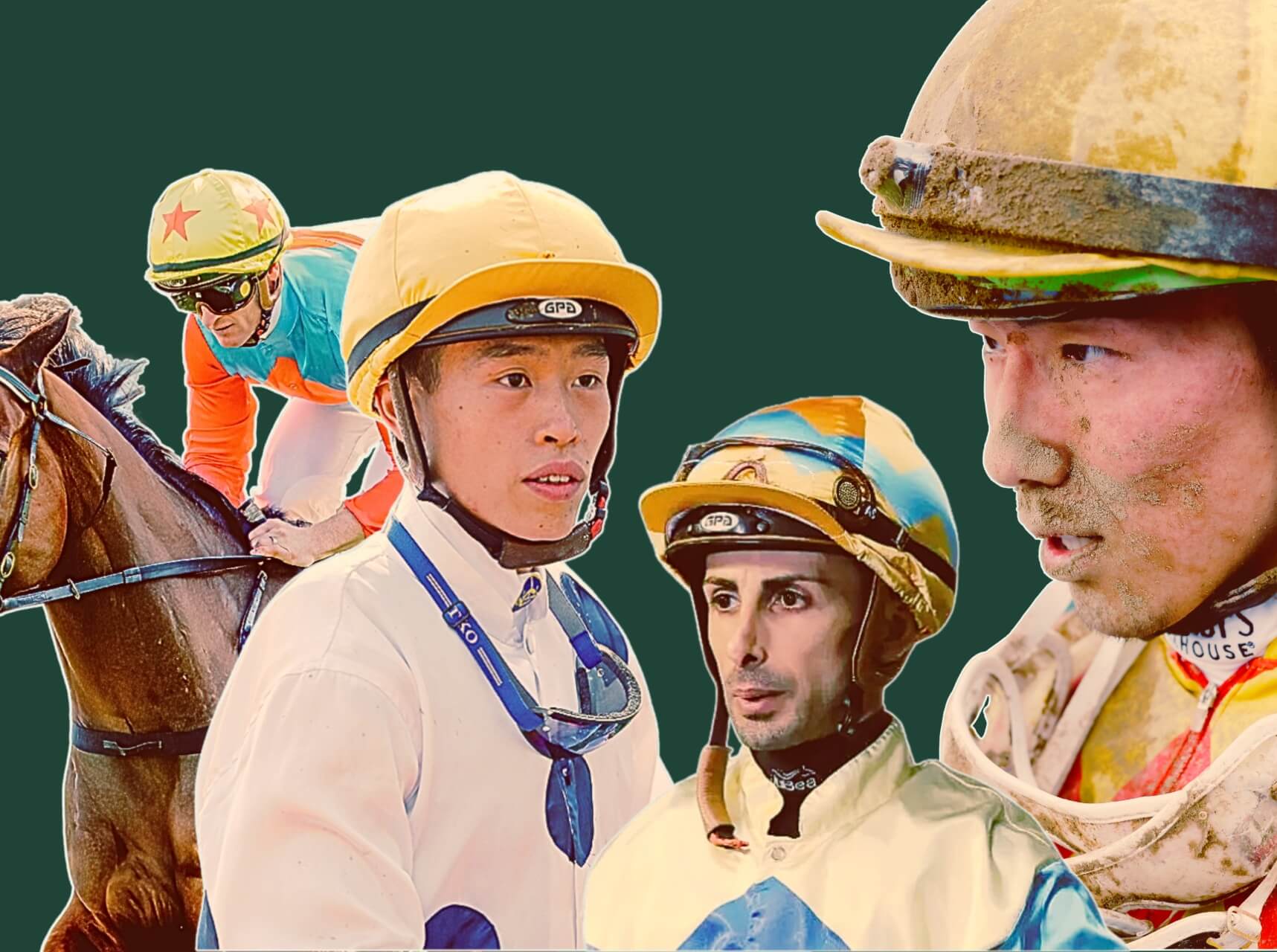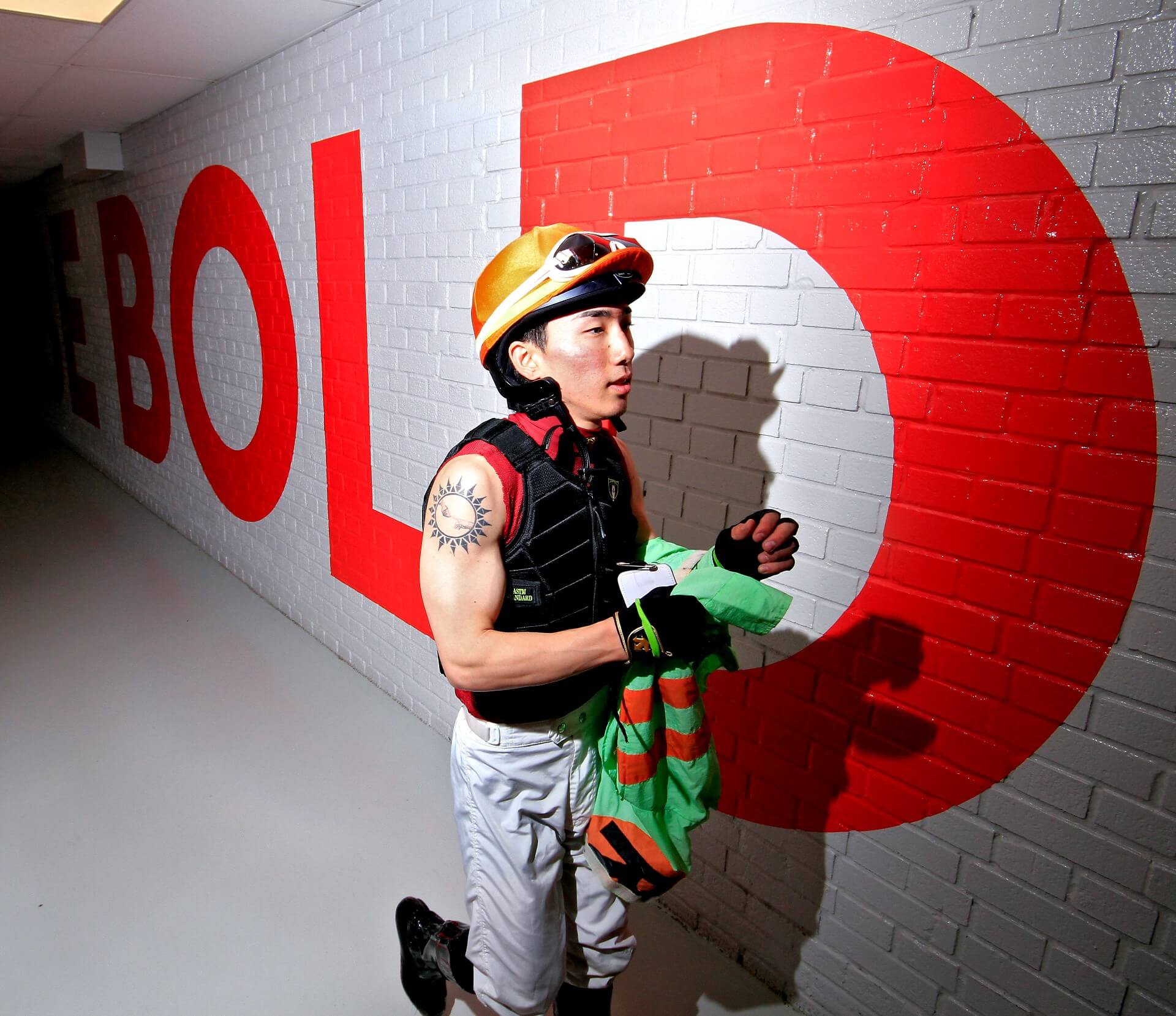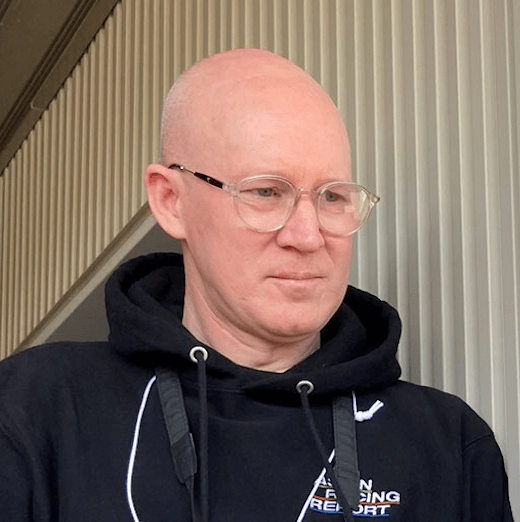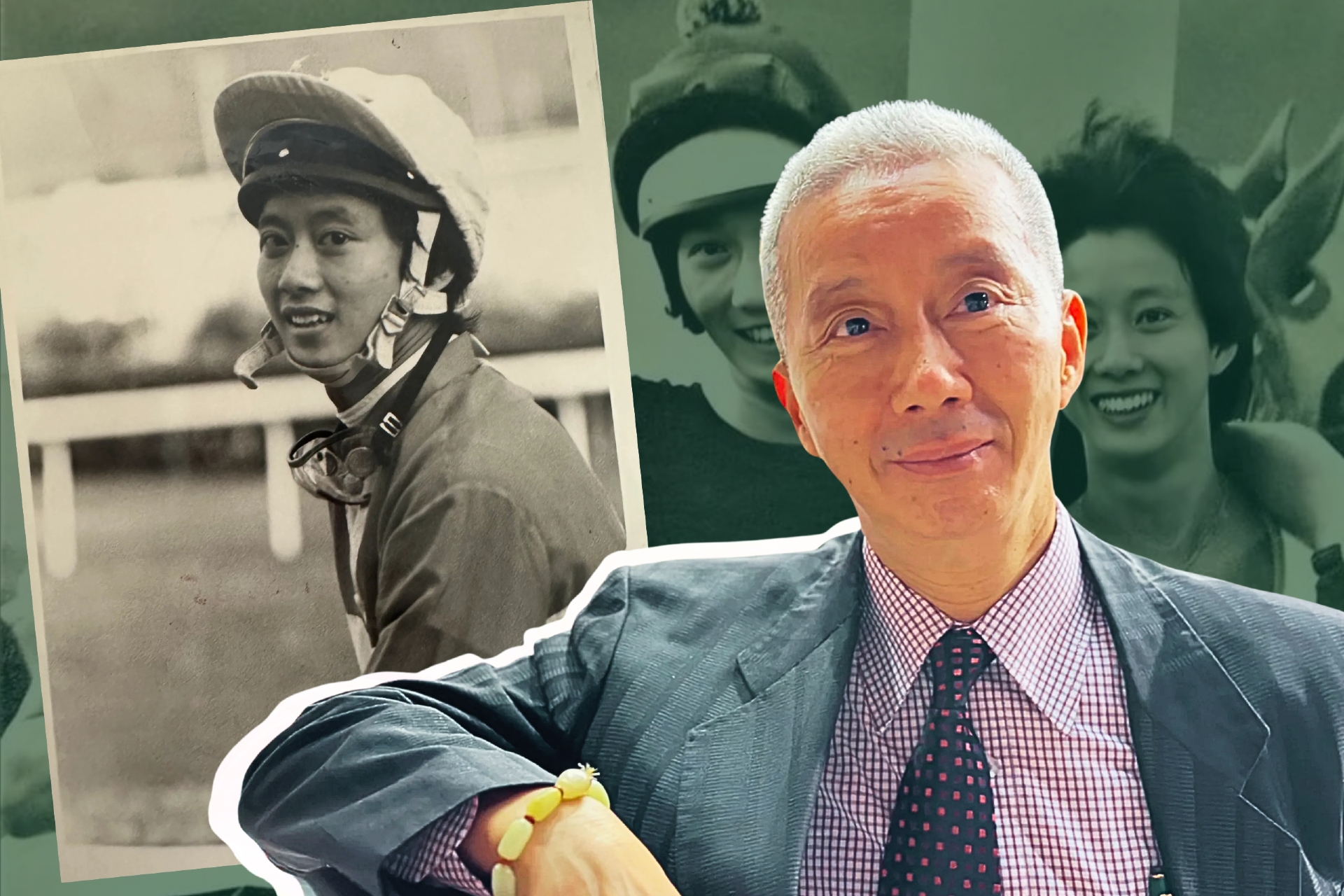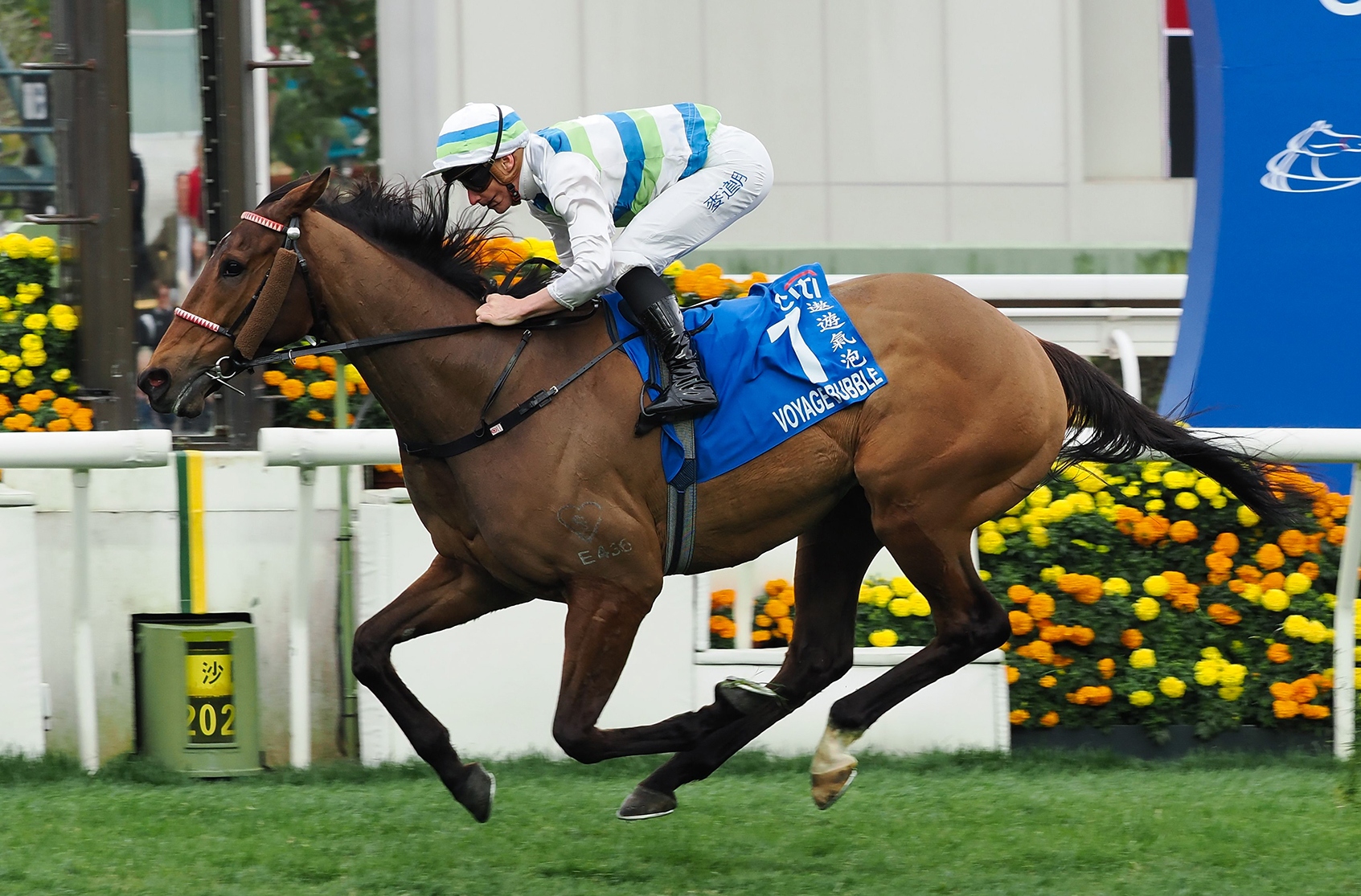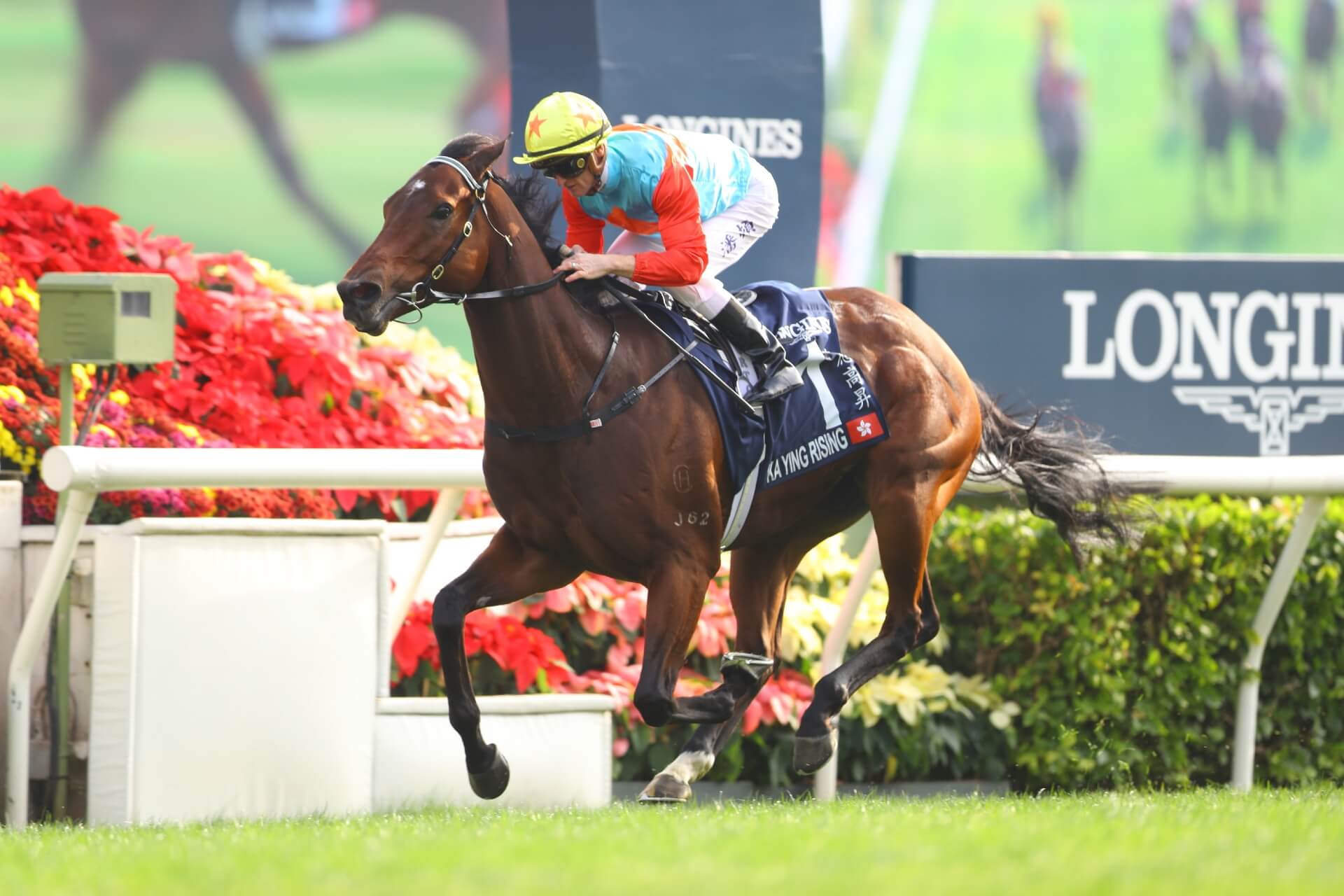Fractures Are One Thing, Vincent Ho’s Brain Injury Is Another
Top jockeys Vincent Ho, Zac Purton, Kazushi Kimura and Alberto Sanna talk about the challenges of being out of the saddle due to injuries.
VINCENT HO is working his legs and lungs on the treadmill on the hard path to recovery when he tells Idol Horse, “Some days are good, some days not.” A brain injury on top of neck fractures will do that, and Ho knows he’s in for a tough, possibly long route back to race-riding.
“When I come back is a question-mark because it needs all the symptoms to have receded,” he says. “We don’t know.”
Ho’s “This will take time” approach to his latest injuries is alien not only to himself but also just about every other jockey out there. The usual thought is ‘How soon can I be back riding?’
But the symptoms he has are not to be taken lightly: they came from an impact so violent that it caused a brain contusion and a brain bleed – besides the three fractures to his neck – and include “dizziness, quite often,” as well as “headaches” and sensitivity to “noises or brightness,” which means he is avoiding watching screens or listening to podcasts.
Not too far away, his fellow Hong Kong-based jockey Zac Purton has just been to Union Hospital and had the pins removed from the smashed-up toe that has sidelined him since a race fall on the same day (different race) as Ho, February 9; an ocean away in California, Kazushi Kimura is readying for a return to riding trackwork after eight weeks of treatment and rehab on a leg fracture; and in the middle east, Qatar-based jockey Alberto Sanna is still sore from the fall that left him with fractures to four ribs and his shoulder blade, plus a pneumothorax.
“It’s just the game,” says Sanna. “Everything happens for a reason,” is Kimura’s motto. “You have to stay really positive,” is Ho’s mindset. Important sentiments, but they can’t mask entirely the stark dangers of race-riding.
Purton, Ho, Kimura and Sanna are among the untallied total number of jockeys around the world currently out injured. How they recover, how quickly they try to push the recovery, and what they do with their time away from race-riding depends on the type of injury and the limitations that brings, as well as their general life circumstances.
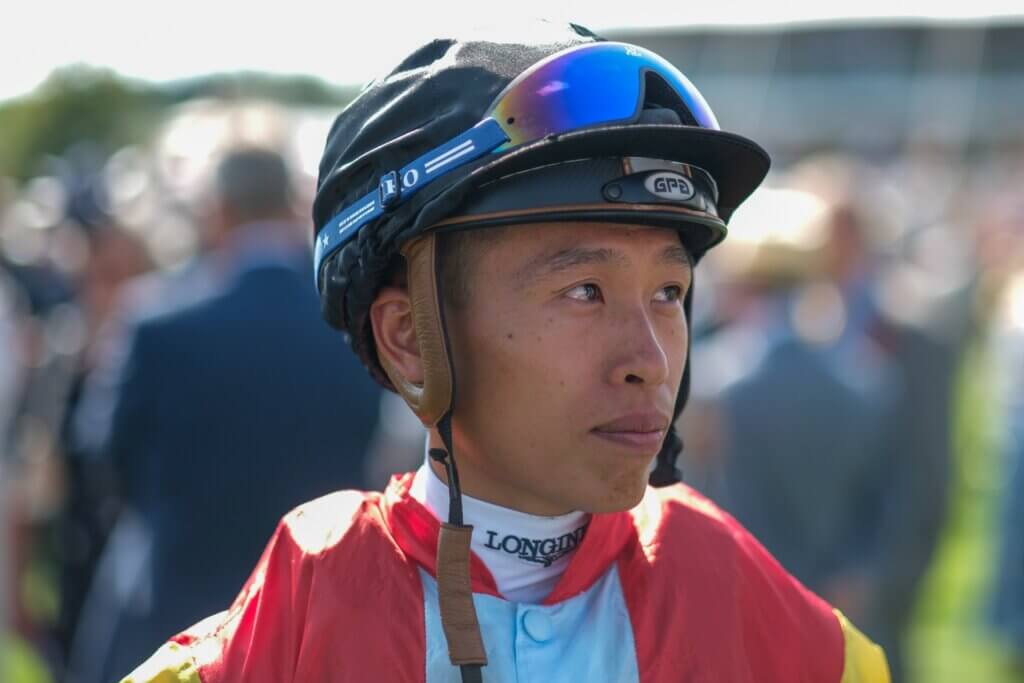
Ho, 34, most famous as the rider of retired Hong Kong great Golden Sixty, has been focused on recovery since he crashed to the ground at Sha Tin. He’s no stranger to that. This is his third extended spell on the sidelines in 18 months as a result of a brutal race fall: the first horror came at Niigata on July 29, 2023; the second on January 24, 2024 at Sha Tin; fractured vertebrae each time, and you can throw in a pneumothorax (when the air leaks from the lung and is trapped inside the chest wall) and a broken finger for good measure.
The serious nature of his current injuries means that he is being particularly careful about how much and what types of physiotherapy and exercise he does day to day: he has a support network that includes a personal trainer, an essential sports psychologist, and a remote team at an Olympic standard sports medicine facility in Geneva, Switzerland, which he attended after the fall in Japan.
“They have proper sports doctors, a team of physios, sports psychologist, dietician … They were Zoom calling me already on the fifth day in the hospital,” he says of his latest fall.
They wouldn’t have got much from him the first four days. Ho was out of it.
“The first four days in hospital, I don’t remember anything, and then the memory started to come back a little bit. I have no idea what happened the first four days after it happened,” he reveals.
“I’d have two physio sessions a day in hospital, mostly releasing pressure, I was sore, and then some light exercise with resistance bands, nothing crazy. I had no idea about time, I felt tired because of the brain injury, so I’d nap a lot, get up for food, drinks and physio, then nap again. That was about it.”
He reiterates, in true jockey-think, that the three spinal fractures “are nothing”, that it’s the brain injury that is causing him issues and which will keep him out of the saddle for a further four months, at least, he thinks, but nothing is certain on that front either.
“I tested out the other day what my max heart rate was and I didn’t feel well, so basically I keep it 10 beats below that and work for a little longer than normal, so we’ll extend the cardio workout and still do some resistance stuff later after the cardio,” he says.
“With fractures, mostly you heal in six to eight weeks, but the brain will take longer, especially because in mid-December I had another fall, when the horse broke down, and I was concussed.”
That fall was December 18. On December 30 the Hong Kong Jockey Club’s chief medical officer formally cleared him to ride on January 1.
“Two concussions in a short period of time isn’t ideal,” he continues. “Now I have to be careful and wait for the proper tests to make sure I can come back well.
“I’ll do those tests over in Switzerland. That’ll be when I feel a bit better. They have given me some guidelines, so I have meetings with my coach, what I can do, what’s the limit of the heart rate, and then work to help the brain, even exercises for the brain, memory games for the brain, everything.”
He says he has noticed a change to his temper, as has his family, but adds that he is very grateful to have his family be so supportive, even with things like driving him places, which he, a lover of fast cars, is not able to do just yet.
“I’m training my mind again (to work through this), even though I’ve had experience of these falls before, it’s not great. The progress most of the time is one step forward and two steps back, every day the symptoms can be a bit different.”
Purton, Kimura and Sanna are not in the same precarious position as Ho. Their injuries are mostly fractures, which, as Ho says: “I could keep going if it was just the fractures: I’m in pain but I know they’re stable.”
Sanna, 39, speaks to Idol Horse five days after his fall and already he is keen to get moving but his broken ribs are limiting him.
“I still have pains in my ribs so I’m using Panadol every six hours. Actually, I was thinking to go for a cycle today,” he says, and talks of heading to Qatar’s Olympic track, which is straight and most importantly without bumps on its super-smooth asphalt.
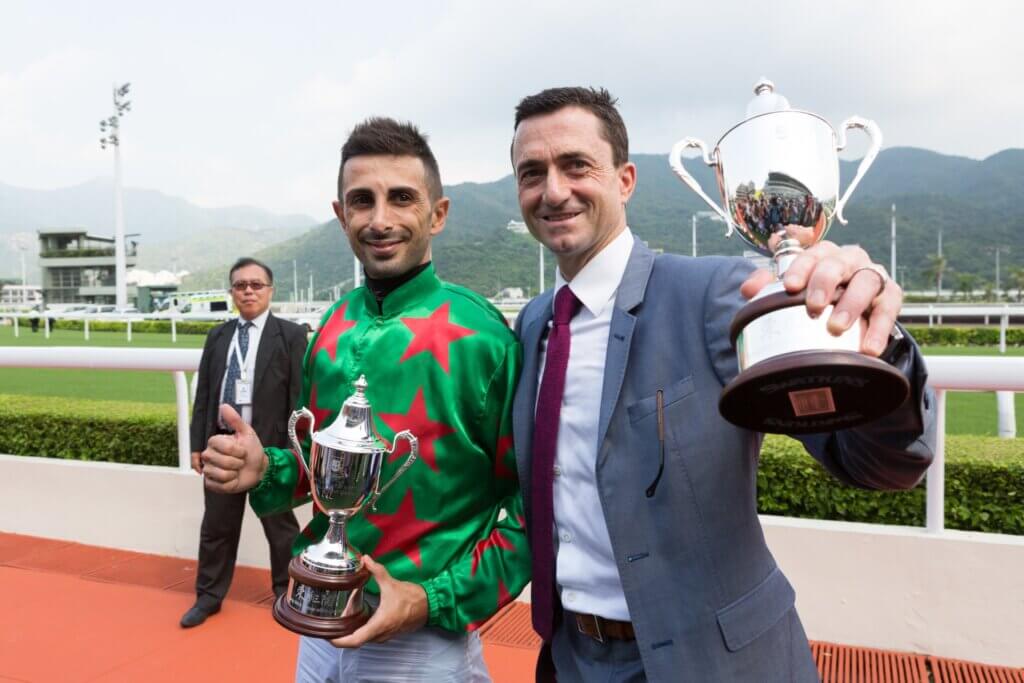
When Sanna fell, he had recently ridden a six-timer, was leading rider in Qatar by wins, and had not had a serious injury in five years, not since one season in Hong Kong when he broke his hip cycling, returned to racing and then broke his ankle. He rushed back from both in fast time, but while he’s eager to return to top condition and get back to what has been another successful season across the Arabian peninsula, he is not going to push as hard as in those days.
“The medical report said the ribs and other stuff needs two weeks sick leave from work. After Ramadan there is a 10 or 12-day break (from racing) so that’s good, I could be back soon and start to get back into top shape because I was in top condition.
“I wasn’t struggling to make the weight, I wasn’t over-training like I used to do in Hong Kong, because in Hong Kong I got a lot of lessons about that. You learn from your mistakes.”
Kimura, too, is conscious of the balance between getting back to business quickly and healing properly the fractures to his tibia and fibula that occurred when a first starter flipped in the gate at Santa Anita on January 16. His ankle was trapped “between the horse’s butt and the tailgate” and when he put his foot on the ground he felt “a different sharp pain”.
It was the 25-year-old rider’s first serious injury since his career took off. He figured he’d be back the next weekend, but the pain didn’t go and a hospital visit and X-rays revealed the damage.
“They said if you don’t have the surgery it takes a while to get back, so at least with the screw and the plate, at my age, it will heal faster and will be quick to recover,” Kimura says.
“I never had a surgery before. I wasn’t happy in that moment, to be honest, because in seven or eight years I’ve never stopped for that long. Then I had the surgery and saw the scar from the ankle and I thought it was going to take a while to heal.”
He has tried a number of different treatments and procedures to speed up the healing process and is aiming for a March 21 racing return, as long as he feels sound.
“I researched ways to recover and got light therapy equipment for the mattress, and I got a Bemer to stimulate muscle therapy. I also have a friend who used to be a jump jockey and he’s now working with stem cell, so I went to Costa Rica to get the stem cell treatment,” he says.
“That boosts the healing, it heals faster. I feel better but I’m trying so many things at the same time that I’m not sure which stuff is working to be honest,” he chuckles. “I just keep doing everything exactly the same time, and I’m healing fast, the muscles and bones are recovering well, but maybe it’s possible it’s the stem cell, or the Bemer, or the light therapy, or maybe my physician is just very good, I don’t know.”
Kimura opted to travel to Canada to “clean-up” his property there from his time as Woodbine’s champion rider, and returned to California via Kentucky. He is conscious that his business is dormant while he is out of action and he does what he needs to to stay on top of what is happening on the track, but he can’t bring himself to watch it live.
“At first I just had to figure to do something, because it’s boring. I had to figure out what I could do besides the moving my body stuff,” he says.
“I felt that if I just kept watching the live racing I’d be more depressed. I’m awkward watching racing on the TV channel, I just want to jump on the horse and race; I can’t ride because of injury but still I’m going to be depressed following the live racing. At the end of the day I just check the replays and follow what’s happening.
“I know which horses I was supposed to ride so it’s hard to watch: I’m happy that the horses are running good, of course, but I also know I’m losing out in numbers.”
And he knows his chances of securing a Kentucky Derby ride lessen with each week he misses.

Purton’s spell out of action has not affected his position at the top of the Hong Kong premiership, he has a 40-win advantage over Hugh Bowman in second as he looks towards an eighth championship. Like Kimura, he doesn’t watch the races live either.
“I’m doing things with my life and then catching up on the replays after,” the 42-year-old says. “I think the worst thing you can do on a Sunday is sit there from one o’clock to six o’clock watching every race go by. It’s a waste of my time when I could be spending time with the kids doing other things.”
He has become a regular on the school run for his two children, and on the touchlines of their sports sessions. He has taken time for lunches and dinners, and attended the LIV Golf at Fanling where the moon boot and crutches hampered progress. He says he has been able to catch up on some things in the office and feels busier than ever.
Purton’s main concern was an infection post-surgery, so he didn’t take a short holiday overseas, which is often the course taken by jockeys in Hong Kong.
“I needed to keep it clean,” Purton says. “When I have a shower, I have to put a plastic bag around it, I have to put some paper towel in there and then put like a neoprene wetsuit material around it, because I can’t get the area around it infected, or wet, or damp. But I didn’t want to be getting on a plane and travelling and doing all these things where you’re dealing with different humidities and all that.
“In my mind, it has kept me grounded here in Hong Kong. It allowed me to fill the days in by doing physio, going to the gym, continuing to tick over: you don’t want your muscles to seize up or waste away, because when it comes time to get back on the horse and get fit you wouldn’t have done anything and you’d suffer for it.”
Meanwhile, Ho’s days are all about rehab and physio, but also necessary rest. And he is doing plenty of suffering already, the kind an elite athlete must go through after a serious injury to get his body and mind back to the levels of fitness and wellness needed if they are to race-ride again.
“Rehab right now is tougher than the training I’d do in a full racing season because mentally it’s hard to be in the right state of mind,” Ho says.
“It’s going to be tough, for sure,” he adds. “Some injuries you can rush a little bit but not this one, unfortunately. We need to make sure it’s 100 percent, we can’t rush it.” ∎

